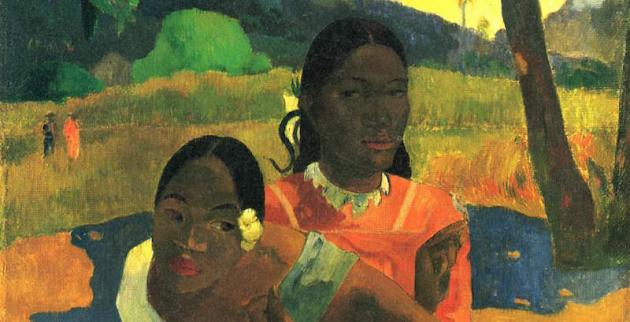A painting of two Tahitian girls by Paul Gauguin has become the world’s most expensive work of art, after a member of the Qatar Royal family privately paid $300m (£196.7m) for it. The 1892 artwork titled ‘Nafea Faa Ipoipo’ (When Will You Marry?) was sold by former Sotheby’s boss Rudolf Staechelin, who resides in Basel Switzerland. This is not the first time a major painting has been purchased for well over the market value by the Qatars. The Card Players By Paul Cezanne sold was sold to the royals in 2011 for $250m (£165m). This work of art previous held the record for the most expensive work of art.
Until recently, this overlooked work by Gauguin was hanging in the Kunstmuseum in Basel. The Qatar Museums, have very deep pockets and have spent more than $1bn investing oil dollars in the art market. Other works believed to have been bought by the family include Mark Rothko’s White Centre (Yellow, Pink and Lavender) in which they paid $72.8m. Andy Warhol’s Men in Her Life for $63.4m, Damien Hirst’s Lullaby for $19m. And Picasso’s Girl With A Dove, a painting which used to hang in London’s National Gallery. The Qatar Royal Family are reported to be putting together a world class collection which will go on display ahead of the World Cup in 2022.
Eugène Henri Paul Gauguin (French: 7 June 1848 – 8 May 1903) was a French Post-Impressionist artist recognised for his experimental use of color and synthetist style that were distinguishably different from Impressionism. His work was influential to the French avant-garde and many modern artists, such as Pablo Picasso and Henri Matisse. Gauguin’s art became popular after his death and many of his paintings were in the possession of Russian collector Sergei Shchukin.
He was an important figure in the Symbolist movement as a painter, sculptor, print-maker, ceramist, and writer. His bold experimentation with color led directly to the Synthetist style of modern art, while his expression of the inherent meaning of the subjects in his paintings, under the influence of the cloisonnist style, paved the way to Primitivism and the return to the pastoral. He was also an influential proponent of wood engraving and woodcuts as art forms.

